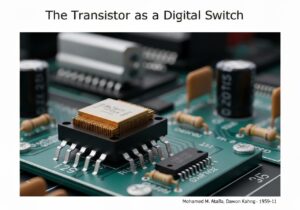To test the integrity of electronic components on a printed لوحة الدائرة الكهربية (PCB).
- المنهجيات: بيئة العمل
In-Circuit Testing (ICT)

In-Circuit Testing (ICT)
- الهندسة الكهربائية, المقاومة الكهربائية, الهندسة الإلكترونية, الإلكترونيات, لوحة الدوائر المطبوعة (PCB), ضمان الجودة, مراقبة الجودة, إدارة الجودة, طرق الاختبار
الهدف:
كيفية استخدامه:
- An automated test that checks for shorts, opens, resistance, capacitance, and other basic quantities on a PCB. It is performed after the components have been soldered to the board and is used to identify manufacturing defects.
الايجابيات
- Fast and efficient way to test PCBs; Can detect a wide range of manufacturing defects.
سلبيات
- Can be expensive to set up and maintain; May not be able to test all components on a board.
الفئات:
- تصنيع, الجودة
الأفضل لـ
- Testing the quality of printed circuit boards in a high-volume manufacturing environment.
In-Circuit Testing (ICT) can be particularly advantageous in industries such as consumer electronics, automotive, and medical devices, where high reliability and performance of printed circuit boards are paramount. The methodology is typically integrated during the production processes of PCB manufacturing, specifically in the later phases where components have been soldered but prior to final assembly. This context allows for the rapid identification and rectification of issues such as solder bridging, incorrect component placements, or open circuits, which could otherwise lead to product failures. Key participants in this testing process include test engineers who design the test fixtures and programs, as well as manufacturing technicians responsible for operating the ICT equipment. The integration of ICT into a production line not only promotes quality assurance but also enhances manufacturing yields, as defects can be tackled before the product undergoes further assembly or incurs additional costs in later stages. Moreover, with automated testing protocols, ICT can provide consistent results that support high-volume production environments, making it suitable for any production scale, from prototyping phases to mass production. As industries increasingly push for edge cases like miniaturization and complex circuitry, ICT can adapt by incorporating advanced functionalities such as boundary-scan testing for digital design verification, further enhancing its utility in robust testing scenarios.
الخطوات الرئيسية لهذه المنهجية
- Connect the ICT test fixture to the PCB.
- Initialize the ICT software and configure the test parameters for the specific PCB design.
- Conduct a continuity test to identify shorts and opens between connections.
- Measure resistance and ensure it falls within specified limits.
- Check capacitance values against predefined criteria.
- Perform functional tests to verify component operation and response.
- Log test results and flag any failures for further analysis.
- Review the test program for efficiency and coverage of the design.
نصائح للمحترفين
- Invest in high-quality, precision probes to ensure accurate connections and reliable test results.
- Optimize test fixture design to minimize false positives and facilitate easy reconfiguration for different PCB layouts.
- Implement data analytics on test results to identify recurring defects and enhance the manufacturing process continuously.
لقراءة عدة منهجيات ومقارنتها, نوصي باستخدام
> مستودع المنهجيات الشامل <
مع أكثر من 400 منهجية أخرى.
نرحب بتعليقاتكم على هذه المنهجية أو المعلومات الإضافية على قسم التعليقات أدناه ↓، وكذلك أي أفكار أو روابط متعلقة بالهندسة.
السياق التاريخي
1947
1950
1950
1959-11
1960
1960
1960
1940
1950
1950
1950
1960
1960
1960
1960
(إذا كان التاريخ غير معروف أو غير ذي صلة، على سبيل المثال "ميكانيكا الموائع"، يتم تقديم تقدير تقريبي لظهوره الملحوظ)















منشورات ذات صلة
محاكاة مونت كارلو
الاختبار المستند إلى النموذج
التحقق من النموذج
بحوث الأساليب المختلطة
تدقيق الأخطاء (بوكا يوك)
اختبار الملف الشخصي للمهمة